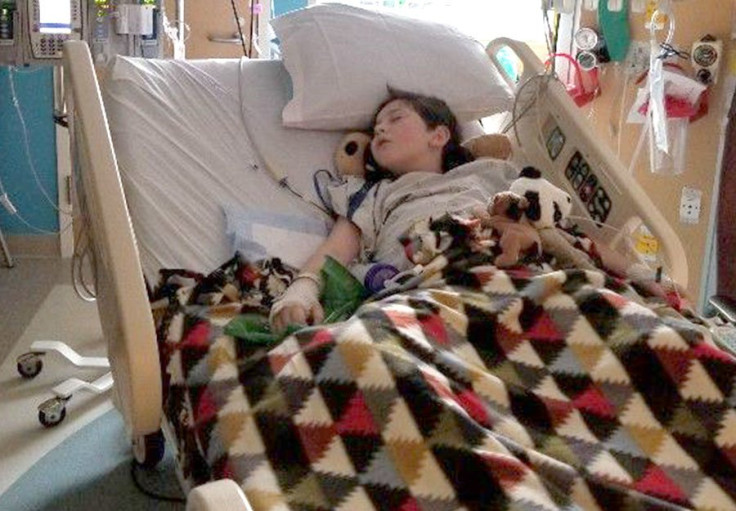What is necrotizing fasciitis and how did it kill 8-year-old Liam Flanagan, who fell off his bike?
The symptoms of potentially deadly necrotizing fasciitis can be mistaken for the flu.

An 8-year-old boy has died after he became infected by bacteria when he fell off his bike.
Doctors amputated almost all of Liam Flanagan's limbs in an attempt to save his life after he contracted an infection known as necrotizing fasciitis. He died eight days after his fall.
The child from Spring Creek, Orgeon, required stitches after he crashed his bike and the handlebar cut through his jeans. Days later his mother Sara Hebard rushed him to hospital as a "purplish-red and gangrenous looking" mark had appeared on his groin and her son was in agony.
Tests showed that Flanagan had been infected by necrotizing fasciitis – an infection believed to have entered his body from the soil.
"Almost his whole right side was gone. They kept cutting and hoping. Cutting and hoping," Hebard told Associated Press of the operation.
Prior to his death, Ferguson's loved ones set up a GoFundMe page to raise funds for his treatment. Almost $30,000 was donated to the page.
"Liam left this cruel world last night to be with my mom and to watch over me forever," read a message left by his mother on the page.
"RIP Liam Patrick. Mommy loves you to the moon and back and I will never forget how special you were and the light that shone so bright from you."
What is necrotizing fasciitis?
The term describes a rare but potentially deadly type of skin infection. "Necrotizing" means "causing the death of tissues". It infects the fascia, or the connective tissue around the muscles, nerves, fat, and blood vessels, before spreading to the soft tissue if left untreated, according to the US Centers for disease Control and Prevention.
It is often called a "flesh-eating bacteria", however several different types of bacteria can cause necrotizing fasciitis including A Streptococcus (group A strep), Klebsiella, Clostridium, Escherichia coli, Staphylococcus aureus, and Aeromonas hydrophila.
Once inside the body, it can spread very quickly.
What are the symptoms?
Signs of infection can appear within hours after a person is injured. Those infected may complain of pain comparable to a pulled muscle. However, the skin may be warm to the touch, swell and a red or purple colour will spread rapidly.
Ulcers, blisters, and black marks may also appear on the skin. The infection can be mistaken for other conditions such as the flu as a person can experience fever, chills, fatigue, and vomiting.

How is it treated?
If caught quickly, necrotizing fasciitis can be treated using antibiotics and surgery to remove the infected parts of the body.
Who is at risk?
Anyone can catch the bacteria that cause necrotizing fasciitis. However, those with conditions such as diabetes, kidney disease, cancer and other diseases which weaken the immune system are more vulnerable.
How can necrotizing fasciitis be avoided?
The CDC recommends good wound care, by performing first aid on even minor wounds; by covering and draining wounds; avoiding bodies of water including swimming pools and oceans if you have open wounds or a rash, and washing hands regularly.






